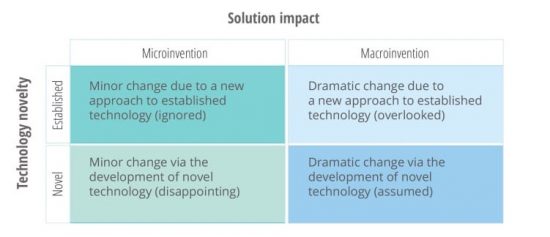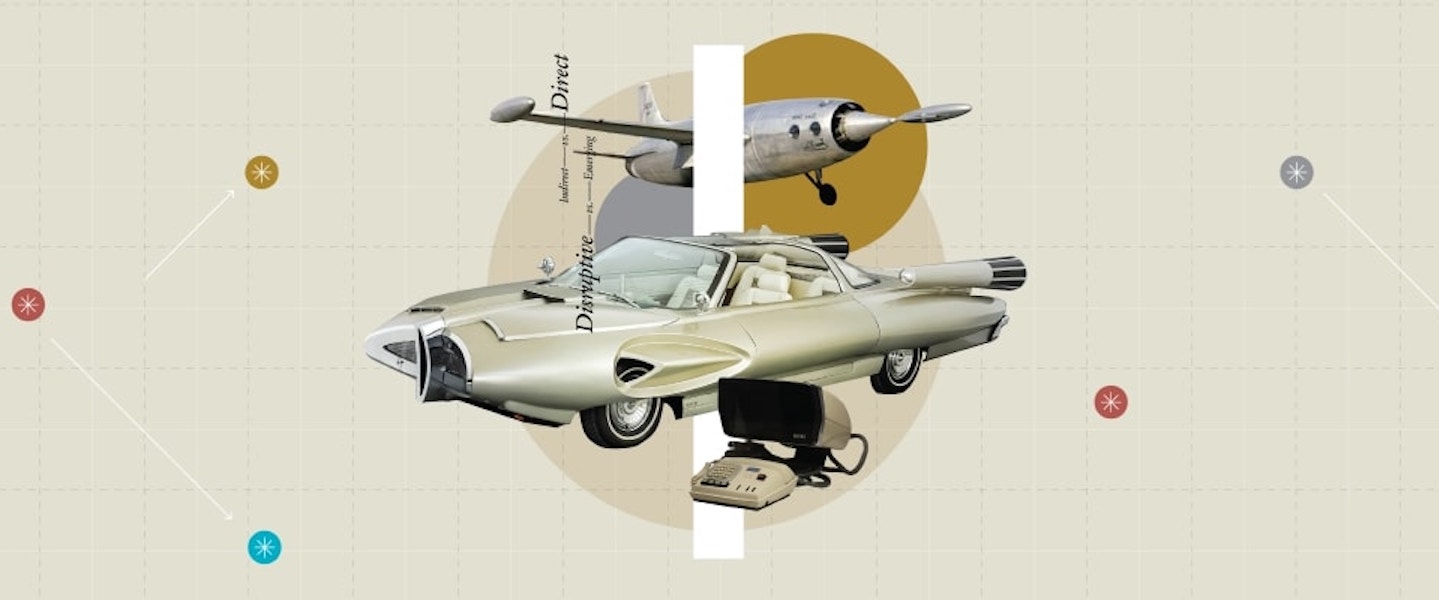We have a new essay published by Deloitte Insights, The real landscape of technology-enabled opportunity,1Evans-Greenwood, Peter. “The Real Landscape of Technology-Enabled Opportunity.” Deloitte Insights, February 28, 2022. https://www2.deloitte.com/us/en/insights/topics/innovation/technology-opportunity-landscape.html. where we look at how technology disrupts markets and society, creating opportunity.
Since Clayton Christensen published published his theory of disruptive innovation, the focus has been on finding those disruptive technologies that reshape markets. And while it’s true that some novel technologies have had this effect, it appears to be the exception rather than the rule.
New technology can change the world, but so does old technology. If fact, most of the disruptions we attribute to technology—such as the industrial revolution being driven by steam power—are the result of steady incremental development of established technologies to the point that they tip over into into disruption, rather than the consequence of a disruptive new technology being invented.
The essay develops a two-by-two (included below) mapping technology novelty against solution impact. While we typically assume that novel technology drives disruption (bottom right), it’s more common for disruption to emerge from existing technology (top-left) where incremental improvement culminates in an impactful solution (moving to the top-right). More over, many of the things we think are disruptive turn out not to be (most novel technologies land in the bottom-left). We’re both chasing shadows and missing opportunities.

If we’re to find opportunity in the landscape of technology enabled change then we need a broader focus than disruptive technoology. Wise investment decisions draw on a more complete view of how technology disrupts markets.
You can find The real landscape of technology-enabled opportunity over at Deloitte Insights.
Endnotes
- 1Evans-Greenwood, Peter. “The Real Landscape of Technology-Enabled Opportunity.” Deloitte Insights, February 28, 2022. https://www2.deloitte.com/us/en/insights/topics/innovation/technology-opportunity-landscape.html.

[…] a collaboration with Damien Crough from prefabAUS. This essay builds on the observation in The real landscape of technology-enabled opportunity2Evans-Greenwood, Peter. “The Real Landscape of Technology-Enabled Opportunity.” Deloitte […]